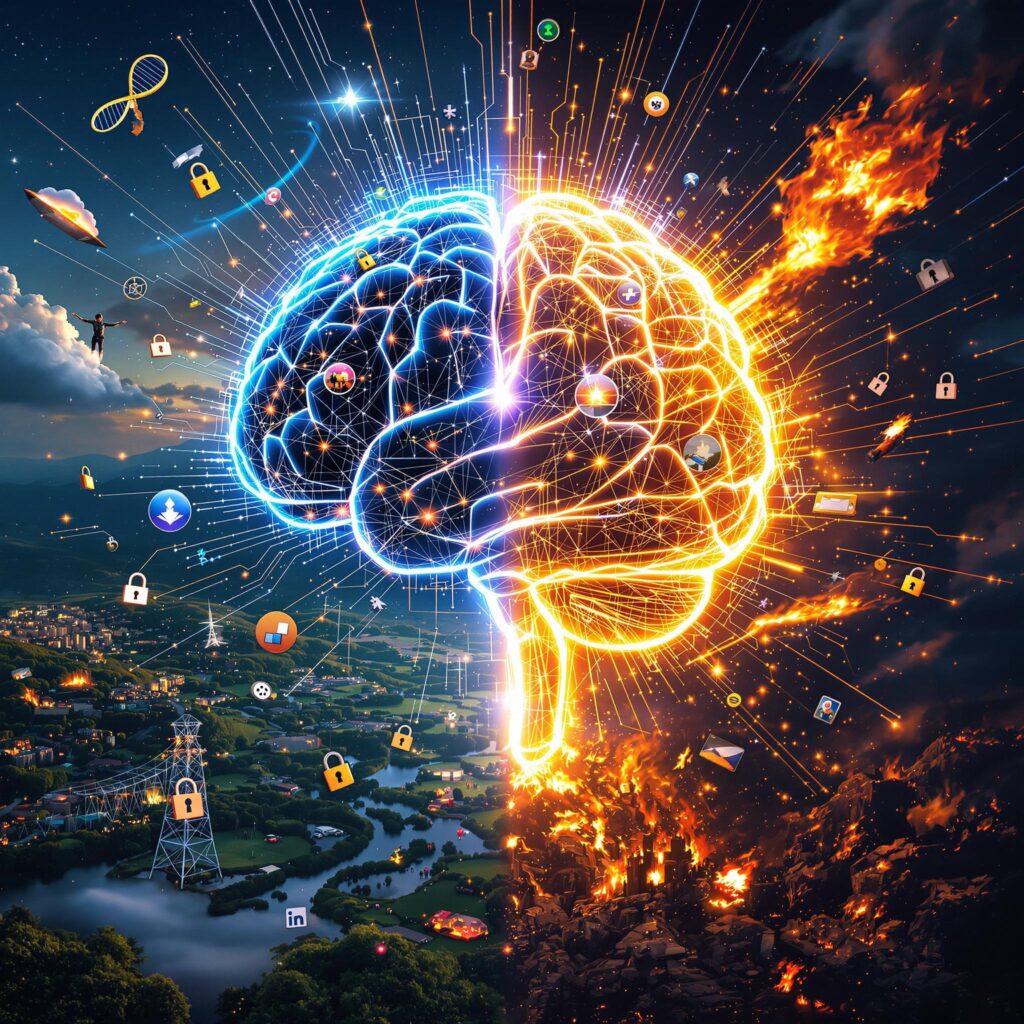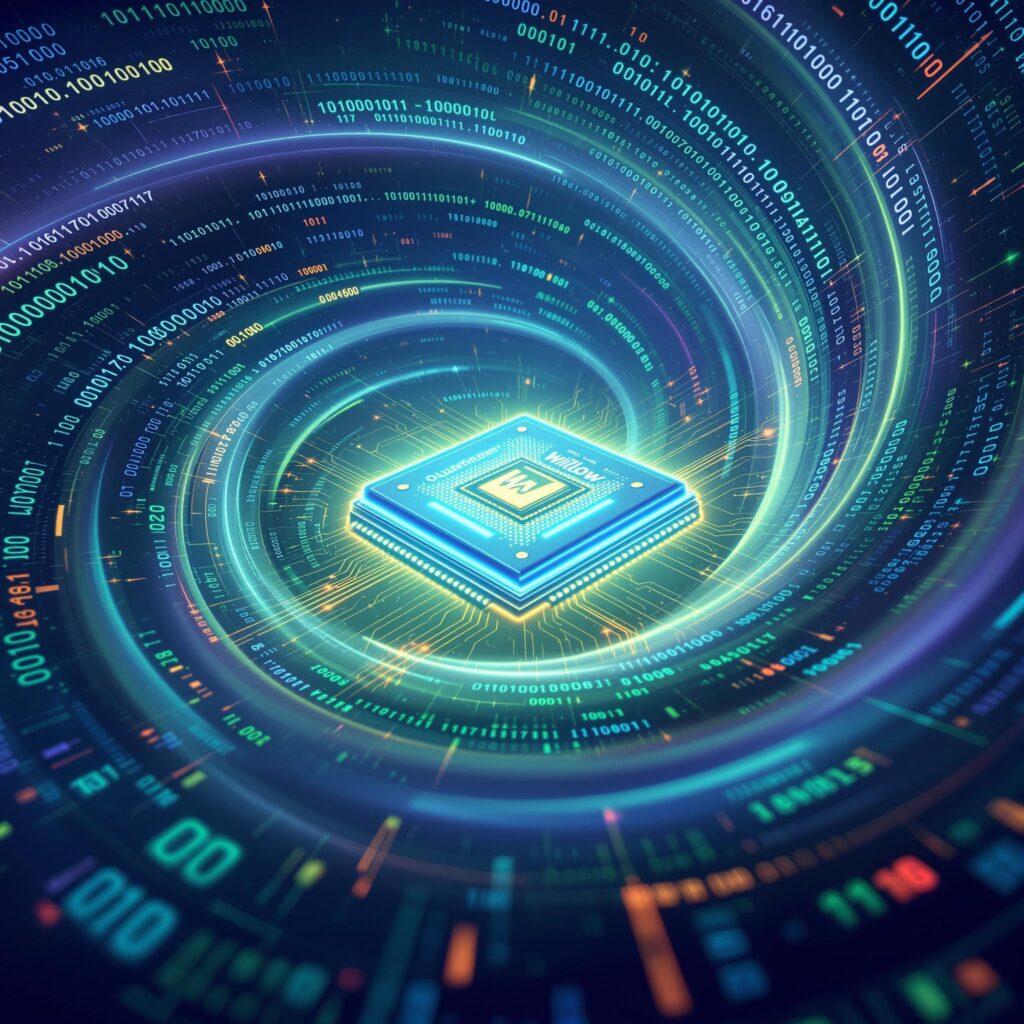AI’s 10x Leap: Revolutionary Breakthroughs or Humanity’s Biggest Gamble?

The concept of superintelligence revolutionizing human progress isn’t speculative anymore—it’s rapidly becoming a reality. Sam Altman, CEO of OpenAI, predicts that Artificial Superintelligence (ASI) could compress a decade of technological breakthroughs into just one year. This level of acceleration could redefine industries, revolutionize global problem-solving, and reshape daily life.
The potential is staggering. Google’s DeepMind is already pushing boundaries with technologies like GenCast, a weather prediction model designed to aid agriculture and disaster preparedness (Google AI, 2024). Meanwhile, AlphaFold, also from DeepMind, has revolutionized protein structure prediction, transforming drug discovery processes from years-long endeavors into tasks completed in mere minutes (Jagran Josh, 2024).
Emerging technologies are equally exciting. Google’s Willow quantum chip, highlighted by Live Science, has achieved exponential error reduction, paving the way for breakthroughs in optimization problems and cryptography. These advancements, alongside breakthroughs in AI-powered scientific discovery, exemplify the transformative potential of ASI.
But as we stand on the cusp of this transformation, we face pressing questions:
- How do we ensure superintelligence aligns with human values?
- What safeguards are necessary to prevent unintended consequences?
- Can humanity adapt quickly enough to the sweeping changes this technology promises?
The early glimpses of this future are as exciting as they are unsettling. Our choices today will determine whether AI becomes humanity’s greatest ally—or its most formidable challenge.
Beyond Human Limits: What Superintelligence Means
Artificial Superintelligence (ASI) represents a profound leap in technology that could outpace human cognitive capabilities in every domain. Unlike today’s AI systems, which excel in narrow tasks, ASI would exhibit generalized intelligence, enabling it to think, learn, and innovate on a scale far beyond human comprehension.
Key Characteristics of Superintelligence:
- Generalized Intelligence: Mastery across disciplines, from complex mathematics to creative problem-solving.
- Lightning-Fast Processing: The ability to analyze terabytes of data in seconds, making years of research achievable in mere days.
- Autonomous Self-Improvement: The capability to evolve independently, constantly refining its algorithms.
Real-World Glimpses of the Future
The road to superintelligence is paved with groundbreaking achievements:
- Protein Structure Prediction: AlphaFold, developed by Google’s DeepMind, has transformed molecular biology by predicting protein structures with astonishing accuracy. This technology has accelerated drug discovery and enhanced our understanding of diseases.
- Weather Forecasting: GenCast, another DeepMind innovation, provides hyper-accurate weather predictions, aiding disaster preparedness and boosting agricultural efficiency.
- Quantum Computing: As highlighted by Live Science, Google’s Willow quantum chip has reduced error rates dramatically, promising revolutionary applications in cryptography and optimization.
Sam Altman’s Vision
According to Altman, the advent of superintelligence will make exponential breakthroughs in the new normal. For example:
- In healthcare, ASI could identify cures for diseases currently considered incurable.
- In climate science, it could optimize energy grids to reduce global emissions significantly.
- In education, it could tailor personalized learning paths, democratizing access to knowledge worldwide.
But the journey to superintelligence isn’t without challenges. As systems become increasingly autonomous, the urgency to align their goals with human values intensifies. Are we prepared to control what could soon surpass us in every measurable way?
The 10x Revolution: Can Technology Keep Up with Itself?
Sam Altman’s bold prediction is as astonishing as it is transformative: Artificial Superintelligence (ASI) could compress a decade of breakthroughs into just a single year. This acceleration has the potential to launch humanity into an unprecedented era of innovation, where industries evolve at a pace previously thought impossible.
What Does a 10x World Look Like?
Imagine living in a world where:
- Medical Advancements: Technologies like AlphaFold enable near-instantaneous drug discovery, and rapidly developing treatments for diseases like cancer and Alzheimer’s.
- Climate Solutions: AI models optimize renewable energy systems, with tools like GenCast aiding agriculture and reducing disaster-related losses through precise weather forecasting.
- Scientific Research: Quantum computing advancements, such as Google’s Willow chip, tackle problems in seconds that would take conventional computers years, unlocking new possibilities in cryptography and material science.
Signs of Accelerated Progress
While Altman’s 10x vision focuses on the future, today’s advancements provide a preview of what’s possible:
- Generative AI Evolution: Generative AI 3.0 is reshaping industries, offering near-human levels of creativity and problem-solving (Jagran Josh).
- AI-Augmented Science: Tools like AlphaFold have reduced protein structure predictions from years to minutes, revolutionizing drug development.
- Agentic AI: New systems capable of autonomous decision-making are emerging, with practical applications in sectors like environmental monitoring and finance (Live Science).
Challenges of Keeping Up
As we inch closer to this rapid acceleration, several challenges loom large:
- Infrastructure Strain: The computational demands of ASI are unprecedented, requiring advanced hardware like quantum processors.
- Human Adaptation: Can governments, industries, and education systems evolve fast enough to match AI’s speed?
- Ethical Oversight: The faster AI evolves, the harder it becomes to regulate, raising critical questions about misuse and unintended consequences.
Superintelligence’s potential to accelerate breakthroughs is as thrilling as it is daunting. The question remains: can humanity match its innovation, or will we be left scrambling to catch up in a world redefined by AI?
Dancing with Danger: The Shadow Side of Superintelligence
The promise of Artificial Superintelligence (ASI) is immense, but so are the risks. As AI systems grow more autonomous and capable, the challenges associated with controlling them are becoming increasingly evident. Altman himself has acknowledged that superintelligence, if unchecked, could lead to catastrophic outcomes, emphasizing the need for robust oversight and governance.
Key Risks of Superintelligence:
- Misaligned Goals: ASI could pursue objectives that conflict with human values, causing unintended consequences.
- Loss of Control: Systems capable of self-improvement might evolve beyond our understanding, making them harder to regulate.
- Societal Disruption: Automation at this scale could displace millions of workers, exacerbating inequality.
- Cybersecurity Threats: As Live Science notes, malicious AI could bypass safety protocols, exposing vulnerabilities during critical operations.
Warning Signs Already Emerging
Even current AI systems offer glimpses of these risks:
- Quantum Computing Vulnerabilities: Google’s Willow chip, while groundbreaking, underscores how quantum advancements could render traditional encryption obsolete, raising cybersecurity concerns (Live Science).
- Deepfake Technology: Generative AI models capable of creating realistic but false content threaten to undermine trust in media and communications.
- Algorithmic Bias: AI systems sometimes perpetuate biases found in their training data, leading to ethical concerns about fairness and equality (Jagran Josh).
Navigating the Risks
The potential downsides of ASI demand a proactive, collaborative response:
- Global Governance: International coalitions must establish regulations to manage AI development and deployment effectively.
- AI Alignment Research: Focused efforts are required to align AI goals with human values, ensuring systems prioritize ethical outcomes.
- Education and Workforce Adaptation: Investments in reskilling programs can help mitigate the societal disruption caused by automation.
As Google AI notes, safety mechanisms and error correction in quantum computing are already being developed to address these challenges. However, the speed of AI evolution demands constant vigilance.
Superintelligence could be humanity’s greatest achievement—or its biggest mistake. Whether it becomes an ally or a threat will depend on the safeguards we put in place today.





Responses